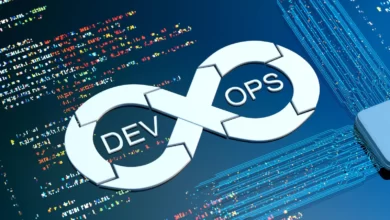What are the Best Practices for Security with MEAN Stack Training

MEAN Stack Training offers complete learning on the MEAN Stack. It is a combination of technologies that is popular for web application development. MEAN refers to MongoDB, Express.js, Angular, and Node.js. Every component has a specific role to play in the web development process.
An introduction of the components that make up the MEAN Stack Training in Noida is as follows:
- MongoDB: MongoDB is a NoSQL database that offers a flexible and scalable solution for the storage and retrieval of data. It makes the use of a document-oriented model, thus permitting to store data in JSON-like documents. It is popular for its high performance, scalability, as well as ease of use.
- js: This is a lightweight web application framework for Node.js. It makes the development of server-side applications easier by offering a flexible set of features and utilities. Express.js handles the HTTP requests, routing, middleware management, and template rendering. This further makes it easier to develop the server-side logic for web applications.
- Angular: Google set up and maintains Angular, a sophisticated front-end framework. It permits one to develop dynamic and responsive single-page applications. Angular offers a complete set of features for data binding, component-based architecture, client-side routing, etc.
- Js: Node.js refers to a server-side JavaScript runtime set up on Chrome’s V8 JavaScript engine. It allows the developers to make scalable and high-performing network applications. With Node.js, one may create server-side logic, handle HTTP requests, interact with databases, and carry out other server-side tasks.
Building Secure MEAN Stack Applications with MEAN Stack Training
Creating a safe MEAN stack application entails implementing numerous security measures at various tiers of the application stack. Here are some security recommended practices while dealing with the MEAN stack:
- Secure Coding Practices: This focuses on using parameter queries for preventing SQL injection attacks. Also, it validates and sanitizes all user input for preventing cross-site scripting attacks. To learn the coding practices, check the MEAN Stack Training by CETPA
- Authentication and Authorization: This focuses on the implementation of a secure authentication mechanism like JSON Web Tokens or session-based authentication. Individuals shall use secure protocols (HTTPS) for the transmission of sensitive data like passwords or tokens.
- Cross-Site Request Forgery (CSRF) Protection: Individuals must use CSRF tokens for protecting against CSRF attacks. Also, it is important to set appropriate headers for ensuring that requests belong to the same origin.
- Secure Configuration: Individuals shall follow secure configuration practices for the components of MEAN Stack. This includes the database, web server, application server, etc. Also, they shall disable the unnecessary services and characteristics, and apply security patches and updates regularly.
- Input Validation and Output Encoding: Developers must incorporate strong input validation by listing strict data validation rules and sanitizing user input. Also, it is advisable that they use output encoding techniques for preventing XSS attacks when offering dynamic content.
- Secure Session Management: Individuals must implement secure session management ideas like session timeouts, secure cookie settings, and session encryption. Also, they must avoid the storage of sensitive data in client-side cookies.
Join the MERN Stack Training in Noida Embrace Full-Stack JavaScript Development now.
End Results
To summarize, individuals shall remember that security is a continuous process. Therefore, it is much necessary to know the latest updates on security practices and emerging threats. Hence, a regular review and enhancement of security of MEAN stack applications help to ensure a robust and secure application. Also, MEAN Stack Online Training offers individuals with the appropriate knowledge and skills required for becoming a MEAN Stack Developer.
This development of web applications takes place using MongoDB, Express.js, Angular, and Node.js. Mastering these technologies provides individuals with the ability to create flexible and secure web applications. These applications, therefore, leverage the power of JavaScript on both the client and server sides.
Throughout the curriculum, students master the core ideas of each component and how they interact to produce a single development stack. Also, they gain hands-on experience through practical exercises, real-world projects, and assistance from professional teachers.
MEAN Stack course prepares users to face current development difficulties like data management, server-side logic, client-side interaction, and user experience. It helps them to build web applications that are efficient, scalable, and responsive by using the characteristics of each technology. Not just this, individuals also acquire competitive advantage in the job market as full-stack developers by completing MEAN Stack training. Employers are looking for someone who can manage end-to-end programming and have a deep understanding of JavaScript-based technology. Hence, aspirants may pursue intriguing job options in web development, software engineering, and application architecture with MEAN Stack knowledge.
Ultimately, progressively learning and staying up to date with the newest innovations in the MEAN Stack ecosystem is critical. This is for preserving the skills and assuring the security and performance of the web apps. MEAN Stack training provides a solid basis for an individual’s learning journey. This, therefore, allows them to remain ahead in the fast-expanding field of web development.





